A partire dal 1960, Goodman s’allontana dai principi teorici del positivismo. Egli dunque abbraccerà il nominalismo ed il relativismo. La conoscenza né rispecchierà la realtà né rielaborerà dei “dati dall’immediato”. L’uomo interagisce col suo mondo tramite i sistemi (parametri) simbolici. Questi ci permetteranno d’imbastire solo certe “descrizioni”, senza una verità assoluta. Goodman sostiene (seguendo la Gestalt di Arnheim e Gombrich) che la percezione non è passiva, bensì un’attività. Si può citare ad esempio la visione. L’occhio non sarà mai “innocente”[1]. Sia il modo in cui vediamo sia semplicemente ciò che vediamo cambia, in rapporto alla nostra situazione d’esperienza visiva (così per un interesse, una predisposizione, un’inclinazione ecc…). Oltre al “mito” del dato assoluto, cade pure il “mito” dell’arte solamente imitativa. Goodman ha un approccio estetico che risentirà del funzionalismo e dell’anti-essenzialismo. A lui interessa unicamente il modo in cui l’arte accade, in qualsivoglia epoca. Di certo, un oggetto per diventare estetico dovrà espletare una funzione di tipo simbolico[2]. Si consideri un determinato periodo. Là, qualcosa potrà funzionare come arte… Ma non è detto che ciò valga anche per il periodo immediatamente successivo. Dunque rimarrà soltanto lo storicismo? Forse, bisogna intervallare il modo tramite cui l’arte accade, rispetto al suo simbolismo. Tale percezione aiuterebbe a percepire meglio le variazioni dell’estetica, sotto i corsi e ricorsi cari allo storicismo.
Per Dorfles, tutte le opere d’arte dovrebbero conservare almeno un momento di “pausa”. Qualcosa che valga a livello percettologico. Più precisamente, fra le opere d’arte e la fruizione estetica non si dovrebbe trovare nulla[3]. Di conseguenza, quanto a noi sarà impedito il riprodurre a piacimento? L’arte contemporanea, lungi dal “romanticismo” di recuperarsi un’aura materiale e concettuale, deve almeno garantirsi la “semplicità” d’un intervallo percettivo. Noi conosciamo l’impulso al minimalismo estetico, dagli anni ’60 in poi. Dorfles introduce ad un between fenomenologico. A lui preme lo spazio materiale fra l’opera d’arte ed il coevo spettatore. Sembra una concessione alla percezione. In questa, la sensazione (che è massimamente visiva) accade dentro la sua situazione per spazio-temporalità. Qualcosa che tramite l’estetica noi dovremo intervallare, provando a prenderne coscienza. Valga per esempio la contemplazione che interpreti. Questa all’inizio “staccherebbe” dalla sua autocoscienza.
Goodman prova a trovare i caratteri discriminanti (variabili) fra i diversi linguaggi del simbolismo. Solo quest’ultimo sarà ammesso, per denotare l’arte. Resta però la necessità parallela di studiare una certa epoca a livello rappresentativo, espressivo, esplicativo ecc… Là, in apparenza ci sarebbe “assai più” d’un simbolismo (favorevole all’arte). Per Goodman, è molto importante distinguere il linguaggio autografo dal linguaggio allografo. Si può fare qualche esempio. Il linguaggio simbolistico della pittura e della scultura è autografo. Quello si darà nell’opera stessa. Il linguaggio simbolistico della musica invece è allografo. Uno spartito se preso in se stesso non ha la qualità artistica, bensì soltanto “un’annotazione” del suo simbolismo, che là si rimanda altrove (s’intende: all’esecuzione del brano). Allora l’esteticità può percepirsi diversamente? Essa non starà nell’oggetto artistico, ma nemmeno nell’esperienza d’un oggetto artistico. L’esteticità si dà in tutti i linguaggi simbolistici, anche se alcuni linguaggi simbolistici si percepiscono come “più estetici” degli altri. Nel contempo, bisogna che ne studiamo i sintomi. Un linguaggio simbolistico può avere una densità (profondità), oppure una completezza (precisione), oppure ancora una complessità (raffinatezza), sempre a livello sintattico e semantico. Per Goodman, vale anche il percorso di studio all’inverso. Così per designare i linguaggi non simbolistici (senza l’estetica) subentrano l’articolazione denotativa o la mancanza d’ambiguità semantica.
Per Dorfles, un collage pittorico si percepisce diversamente, rispetto al collage musicale. Il primo esteticamente ha avuto soprattutto una risoluzione dada (per esempio con Schwitters) oppure pop (per esempio con Rauschenberg). Nel collage pittorico, comunque permane l’autonomia dei singoli elementi, a prescindere dalla loro giustapposizione. Ciò sarebbe impossibile in quello musicale. Una coesistenza “in verticale”, fra le note diversamente armoniche, non impedirà loro di fondersi l’una sull’altra, costituendo un’unica melodia, “in orizzontale”. Per Dorfles, un collage musicale sarebbe possibile solo mediante una successione di brani diversi. Esteticamente, lì l’autonomia dei singoli elementi (le note) si fa sempre “restringere”, dalla melodia.
Goodman critica la percezione tipicamente classicistica per cui nell’arte una rappresentazione si spiega con la somiglianza. Subito nascerebbero dei paradossi. Se un certo oggetto assomiglia ad un altro, anche quest’ultimo assomiglierà al primo. Ma ancora non basta… Il vero problema è che, se un certo oggetto ne rappresenta un altro, a quest’ultimo sfuggirebbe di rappresentare il primo. Lì, varrebbe subito la nostra percezione d’una “gerarchia”. Per Goodman, la rappresentazione artistica è essenzialmente una denotazione dentro un linguaggio simbolico. Quest’ultimo funge come al solito da presupposto. Siccome i linguaggi simbolistici mutano d’epoca in epoca, è pacifico che ogni rappresentazione in arte non può mai apparire assolutamente fedele al suo oggetto da rappresentare, bensì in via convenzionale. Forse, diventerà più interessante la percezione dell’interferenza? Il critico Birnbaum ha studiato le videoinstallazioni dell’artista Aitken[4]. In quelle noi percepiamo che la cinepresa si sposti rapidamente (spesso venendoci incontro). La stessa immagine è proiettata su più schermi, collocati ad incrociarsi (nelle loro diagonali). Alla fine, la videoinstallazione di Aitken diventerà quasi “psichedelica”. Lì, la proiezione multipla sembra a Birnbaum rielaborata, da un cervello che abbia perso le “coordinate euclidee” (così da emettere “altri suoni”), citando un passo da Deleuze. In più videoinstallazioni accade che Aitken riprende qualcosa in modo circolare, evitando d’assegnarle un finale. Gli schermi, incrociati con le loro diagonali (così da spezzarsi), contribuiranno a far rimbalzare la linearità al tempo solo cronometrico. La cinepresa si muoverebbe come il telecomando, il radar, il monitor “nebbioso”. Sono elementi dove noi percepiamo la rottura lineare (la deviazione) dell’interferenza.
Per Kosuth, l’opera d’arte ha soltanto un linguaggio analitico. In quella, i presupposti concettuali al massimo continuano a darsi, senza mai dipendere dalla materia empirica. Per Kosuth, l’arte dunque sarebbe “tautologica”. Quando Serra lancia il piombo fuso, pur facendo un calcolo molecolare e gravitazionale, per quale motivo altri (i critici, i galleristi, i collezionisti ecc…) dovrebbero “ricaricare” il suo lavoro, d’un valore estetico? L’inutilità di questo conferma la percezione di Kosuth per cui l’arte si dà soltanto per se stessa. C’è dunque un “inutile caricamento” d’immaginazione, al momento di recensire esteticamente? Il piombo di Serra avrà già una semplicissima spiegazione: nell’empirismo della fisica! Goodman cita il caso molto problematico d’una figura immaginaria. Un unicorno non potrebbe rappresentarci nulla d’assolutamente oggettivo. Ma torniamo al caso dell’arte. La sua rappresentazione è sempre di livello denotativo (benché a valle d’un mero convenzionalismo). Dunque essa può classificare creativamente il proprio simbolismo, per un qualità stilistica o canonica. Bisogna recuperare il corso della storia. In questo, gli stili artistici dipenderanno da un esercizio alla denotazione (rappresentazione) del simbolismo. Non si tratterebbe né di copiarli banalmente (dalla realtà d’un certo oggetto), né d’inventarli (tramite il soggettivismo dell’ispirazione). Tutti gli stili così nascerebbero “dall’indottrinamento” all’abitudine artistica, in quanto esercizio “meccanico” della propria esteticità. E’ la percezione del corso d’opera a farsi decisiva? L’artista non potrà imitare la natura, perché la sua esteticità deriverà da un’abitudine ad “esprimersi” simbolicamente.
Si consideri la classica rappresentazione all’irrealtà (ossia senza l’oggettività) d’un quadro su Don Chisciotte. Essa col tempo diventerà così “abituale” da trasferirsi nel simbolismo d’una “persona che genericamente combatta contro il nulla”. Qui varrà il livello semantico sotteso all’avverbio. Infatti, il < genericamente > ha un’aura di tipo meccanico (abituale). Col suo relativismo, Goodman ricusa “l’idealismo” per cui in arte la prospettiva (usata a partire dal Rinascimento) sia una norma assoluta. Essa funzionerà sempre in via convenzionale. La scelta od il riconoscimento di qualcosa che noi crediamo artistica deriverà soltanto dall’esercizio e dall’apprendimento “abitudinario” d’un certo linguaggio via simbolismo. Malignamente, forse, questo spiegherebbe l’imbarazzo dei critici che confondano un vero quadro dalla copia successiva… Per Goodman, l’arte va valutata non solo per la sua immediatezza alla percezione, bensì conoscendo la sua funzionalità. Ci servirà una buona abitudine ed un efficace esercizio nel frequentare i musei, le gallerie, le riviste ecc…
Goodman allora pensa che sia impossibile distinguere l’atteggiamento estetico dall’atteggiamento nella vita quotidiana, a lavoro o per la scienza. Né si dovrà percepire la spontaneità dell’imparziale. Tale qualità apparterebbe addirittura alla “fredda” scienza, almeno per l’iniziale curiosità di fare una ricerca. La stessa piacevolezza si libererebbe tanto dall’arte quanto dallo sport, dal programma televisivo, dalle premiazioni ecc… Sarà fondamentale la nostra abitudine alle frequentazioni. Per Goodman, più filosoficamente l’estetica deve rientrare sia nella metafisica (a studiarne il simbolismo) sia nell’epistemologia (a studiarne la percezione).
Citiamo l’installazione di Kosuth dal titolo Ulysses. Là, il light box ha parole che “etichettano” l’uomo in funzione d’una società. Nello stream of consciousness di Joyce, i pensieri si percepiscono tramite la loro tautologia. Troppe volte, noi banalmente “ci fermiamo” innanzi “all’etichetta” di qualcuno, all’interno dei ruoli nella società. Kosuth dispone il light box sulla parete, come una grande cartina al tornasole. Il visitatore “misurerà” la sua convinzione “d’etichettare” gli altri, per esempio essendo troppo “svelto” a pensare che i fratelli ti limiteranno sempre, o che le vergini vivevano soltanto nel passato ecc…
Più genericamente, il fenomeno estetico riuscirà a far rientrare uno “stream of consciousness” del simbolismo nella “tautologia” della percezione? Lì, “un’etichetta” della rappresentazione si metterà alla ricerca d’un suo “attaccamento” per apprendimento[5]. Danto si convince che ormai, nell’epoca contemporanea, i sensi non possono essere il tramite per distinguere l’arte dai meri oggetti, nel quotidiano. Ricordiamo che egli scrive dopo la rivoluzione anticlassicistica di Duchamp, e dentro il più commerciale pop. L’esteticità d’un oggetto dipende dalla sua ambientazione in una storicità socioculturale. Citiamo un verso di Whitman[6]. Per lui, noi non dovremo mai seguire il mare, il sole rosso, il vento che “rida” in via “fanciullesca” o che frusti (come la spiritualità, sul mero materialismo). Esteticamente, in questi casi la natura si percepirà nel suo trascorrimento. La fisica introduce il principio d’inerzia. Qualcosa che per Bachelard si percepirà al massimo grado tramite la “furia” del vento, durante una tempesta. Quello parrà muoversi per il solo fatto di muoversi. Forse Whitman “consigliò” liricamente di non perdere se stessi, “sull’inerzia” della burrasca, del tramonto, della brezza o della tromba d’aria. Quasi pare un’epistemologia per “stream of consciousness” della massa al suo “attaccamento” nel divenire. Ma è possibile percepire un’inerzia storicistica, tramite il piacere per l’arte?
La tautologia ci rimanda forse a Kant e Hegel. Quanto per il primo l’arte sarà qualcosa che piace in modo disinteressato, o quanto per il secondo l’arte sarà qualcosa che non potrà mai tramutarsi in pensiero? Danto neutralizzerebbe ambedue le teorie. Platone ad esempio in apparenza svalutava l’arte, rispetto alla filosofia. Danto cerca più moderatamente di sdoganare la prima dalla seconda[7]. L’esplosione molto contemporanea del ready-made, delle performance e del pop si darebbe proprio in un tentativo da parte dell’arte di riaffermare la sua identità. Ciò varrebbe contro la successiva autocomprensione della filosofia. Inoltre, si pone il problema dell’estetica a livello sensoriale. Forse, dopo il ready-made non c’è alcuna differenza fra una pala di Leonardo Da Vinci e la pala che s’usa per scavare la terra… Per la percezione, entrambe si porranno allo stesso modo.
Danto allora s’avvicina alle tesi dell’ermeneutica contemporanea. La soluzione del problema starà nell’interpretazione da dare alle due pale. Dunque l’arte richiamerebbe a sé la filosofia? In specie, bisognerà porsi la domanda sul come interpretare correttamente un fenomeno estetico. Questo allora nascerà dopo il fatto artistico. Serve anche un aggiornamento della fenomenologia. Per Danto, un’imitazione si rende davvero artistica se non imita semplicemente qualcos’altro (come per l’immagine riflessa allo specchio), bensì ove sia “a proposito di” ciò che imiterebbe. Nel secondo caso, si può avviare una giusta ermeneutica dell’esteticità. Danto cita l’esempio dell’attore che interpreta un ruolo. Si potrà “sdoganare” il primo dal secondo? Il ruolo dell’attore è sempre a proposito di qualcos’altro. Egli ha la mera autocomprensione di rimandare all’interpretabile. L’esteticità per Danto quindi si dà non imitando e basta, bensì imitando verso l’imitato. Forse, bisogna percepire un’autocomprensione che letteralmente “s’aggrappi” sull’interpretabile? Qualcosa in cui “l’attaccarsi” all’imitazione funzioni solo in quanto “a proposito” del suo “riemergere” in riconoscimento?
L’artista Judd col minimalismo poteva appendere al muro una serie di parallelepipedi, gli uni sopra gli altri. Qualcosa da percepire in chiave monolitica, “superando” la nostra osservazione. Questa doveva impattare sull’opera d’arte. I vari parallelepipedi, in quanto appesi in serie, avrebbero ricevuto il nostro sguardo per avviarne la “frantumazione”. Questa però si risolveva nella “rotazione” di se stessa. Il monolite è qualcosa che si percepisce emergendo nella sua “aura”. Esso fa in modo che il nostro sguardo vi s’aggrappi. Sul muro, i parallelepipedi di Judd non si percepiscono a conficcarsi, bensì ad impattare. Pare che essi possano “ruotare”, nella loro successione in “risalita”. L’aggrappato sempre si muove attorno ad un unico punto (in via pendolare). Nel monolite, i “tagli” delle linee rettangolari si percepiscono come circoscritti fra di loro, virtualmente dentro “l’aureola” di se stessi. Qualcosa che Judd persino accresceva, laddove i suoi parallelepipedi fossero in rotazione (tramite una successione in risalita). Un attore “fa riemergere” artisticamente il minimalismo del ruolo, che è “monolitico” quantomeno per la virtualità dell’imitato. Anzi, avverranno alcune correzioni. Un attore non piace se monocorde; la sua espressività funzionerà in quanto “a proposito” di vari “aggrappi” sul riconoscimento dell’imitato.
[1] A. BERTINETTO, G. GARELLI e F. VERCELLONE, Storia dell’estetica moderna e contemporanea, Il Mulino, Bologna 2003, p. 392
[2] N. GOODMAN, I linguaggi dell’arte, Il Saggiatore, Milano 2003, p. 13
[3] G. DORFLES, L’intervallo perduto, Skira, Milano 2006, p. 13
[4] D. BIRNBAUM, Cronologia, Postmediabooks, Milano 2007, p. 67
[5] N. GOODMAN, I linguaggi dell’arte, Il Saggiatore, Milano 2003, p. 59
[6] W. WHITMAN, Leaves of grass, New York University Press, New York 1980, p. 460
[7] A. DANTO, La destituzione filosofica dell’arte, Aesthetica, Palermo 2008, p. 13
THE “STREAM OF CONSCIOUSNESS” THAT HANGS ON TO A TAUTOLOGY
After 1969, Goodman distances himself from the theoretical principles of positivism. So, he will embrace the nominalism and the relativism. The knowledge neither will mirror the reality nor will re-elaborate the “data of immediacy”. The man interacts with his world through the symbolic systems (parameters). These will allow us to sketch out only some “descriptions”, without absolute truth. Goodman tells (following the Gestalt of Arnheim and Gombrich) that the perception is not passive, but an activity. We can mention for example the vision. An eye will never be “innocent”[1]. Both the way through which we see, and simply what we see, changes, in comparison with our situation of a visual experience (so by an interest, a predisposition, an inclination etc…). In addition to the fall of a “myth” for an absolute figure, also a “myth” about art only imitative falls. Goodman has an aesthetic approach that will be affected by the functionalism and the anti-essentialism. He is interested only in the way through which art happens, in every age. Of course, an object becomes aesthetic having to execute a function in symbolic type[2]. We consider a precise age. There, something could function as art… However, we are not sure that this consideration will function also for the age immediately successive. So, will only a historicism remain? Maybe, we have to space out the way through which art happens, respect its symbolism. This perception would help to perceive in the better way the variations of aesthetics, under the examples of history repeating itself, dear to the historicism.
According to Dorfles, all the art works should preserve at least one “break”. Something that will have a value at the perceptological level. More precisely, between the art works and an aesthetic enjoyment we should not find anything[3]. Consequently, how much will we be impeded from a reproduction as we wish? Contemporary art, far away from a “romanticism” to recover for itself a material and conceptual aura, has at least to guarantee for itself the “simplicity” of a perceptive interval. We know the impulse to aesthetics of minimalism, from the ’60 onwards. Dorfles introduces to a phenomenological between. He is especially interested in the material space between the art work and the coeval spectator. It seems a concession to the perception. There, the sensation (which is mainly visual) happens inside its situation for a space-time. Something that through aesthetics we should space out, trying to become aware of that. As useful example, there is the contemplation that interprets. This one at the beginning “would take a break” from its self-awareness.
Goodman tries to find the distinguishing (variable) characters between the different languages of symbolism. Only this one will be permitted, to denote art. However, the necessity in parallel to study a certain age at the representative, expressive, explicative etc… level remains. There, apparently we could find “really more” than a symbolism (favourable to art). According to Goodman, is very important a distinction between the autographic language and the allographic language. We can do some examples. The symbolistic language of painting and sculpture is autographic. This one will happen inside the same work. The symbolistic language of music instead is allographic. A score, taking it as such, has not an artistic quality, but only “an annotation” about its symbolism, that there postpones itself elsewhere (we mean: to the execution of a piece). So can the esthetology be perceived differently? It will be not in the artistic object, but even in the experience of an artistic object. The esthetology happens in all the symbolistic languages, although some symbolistic languages are perceived as “more aesthetic” than other languages. In the same time, we need to study its symptoms. A symbolistic language can have a density (profundity), or rather a completeness (precision), or even rather a complexity (refinement), always at the syntactic and semantic level. According to Goodman, also the reverse path of study has a value. So, to designate the languages not symbolistic (without aesthetics), the articulacy of denotation, or the lacking of a semantic ambiguity, moves in.
According to Dorfles, the pictorial collage is perceived differently, respect the music collage. The first case aesthetically had principally a dadaist resolution (for example by Schwitters) or pop (for example by Rauschenberg). In the pictorial collage, however the autonomy of the single elements remains, regardless of their juxtaposition. Something that will be impossible in a musical level. A coexistence “in vertical”, between the notes differently harmonic, will not impede these to be blended each other, constituting an only one melody, “in horizontal”. According to Dorfles, the music collage would be possible only through a sequence of different songs. Aesthetically, there the autonomy of the single elements (the notes) always has to “be shrunk”, by a melody.
Goodman criticizes the perception typically classical for which in art a representation is explained through a similarity. Immediately, there some paradoxes would rise. If a certain object is similar to another object, also this one will be similar to the first. However it’s still not enough… The real problem is that, if a certain object represents another object, this last one would let the first get away. There, immediately our perception of a “hierarchy” would have a value. According to Goodman, the artistic representation is essentially a denotation inside a symbolic language. This one functions usually as a prerequisite. Considering that the symbolistic languages change from age to age, it is not disputed that every representation in art can never appear absolutely faithful to its object in need to be represented, but in a conventional way. Perhaps, will the perception of an interference be more interesting? Critic Birnbaum studied the videoinstallations of Aitken artist[4]. In these we perceive that the movie camera moves rapidly (often in order to meet us). The same image was projected on more screens, located intersecting (in their diagonals). Finally, the videoinstallation of Aitken will become almost “psychedelic”. There, the multiple projection seems to Birnbaum re-elaborated, by a brain that lost the “Euclidean coordinates” (so emitting “other sounds”), mentioning a line of Deleuze. In many videoinstallations it happens that Aitken frames something in circular way, avoiding to assign to them an end. The screens, intersected by their diagonals (so snapping themselves), will contribute to a ricochet for the linearity of the time only chronometric. The movie camera would move like the remote control, the radar, the “foggy” monitor. These are elements where we perceive the linear break (the deviation) of an interference.
According to Kosuth, the art work has exclusively an analytical language. There, the conceptual pre-comprehensions at most continue to happen, never depending on the empirical matter. According to Kosuth, so art would be “tautological”. When Serra throws the molten lead, although he does a molecular and gravitational calculation, for what reason should the others (the critics, the gallerists, the collectors etc…) “recharge” his work, with an aesthetic value? This uselessness confirms the perception of Kosuth for which the art happens as such only for itself. So, is there an “useless loading” of an imagination, at the moment of writing an aesthetics review? The lead of Serra will already have a very simple explanation: in the empiricism of the physics! Goodman mentions the case very problematic of an imaginary figure. A unicorn could not represent to us anything of absolutely objective. However we have to return to the case of art. Its representation is always at the denotative level (although downline of a mere conventionalism). So it can creatively classify the own symbolism, for a quality stylistic or canonical. We need to recover the course of history. There, the artistic styles will depend on an exercise on the denotation (representation) of the symbolism. Those would not be banally imitated (from the reality of an uncertain object), neither invented (through the subjectivism of an inspiration). So all the styles would be born “by an indoctrination” to the artistic habit, this one as a “mechanical” exercise of the own esthetology. Is the perception of work in progress a decisive factor? The artist will be not able to imitate the nature, because his esthetology will come from a habit to “express himself” symbolically.
We consider the typical representation on the unreality (namely without objectivity) of a picture about Don Chisciotte. This one over time will become so “habitual” as to be transferred in the symbolism of “somebody who generically fights against the nothingness”. Here the semantic level implied on the adverb will have a value. In fact, the < generically > has an aura in mechanical (habitual) type. Through his relativism, Goodman rejects “the idealism” for which in art the perspective (used starting from Renaissance) is an absolute norm. It will function always in a conventional way. The choice or the recognition of something that we believe artistic will come only by the exercise and the “methodical” learning of a certain language through a symbolism. Maybe, maliciously, this situation would explain the embarrassment of the critics who confuse a real picture by the successive copy… According to Goodman, the art has to be evaluated not only for its immediacy on the perception, but knowing its functionality. We will need a good habit and an efficient exercise attending the museums, the galleries, the magazines etc…
So Goodman thinks that we can not distinguish an aesthetic attitude from an attitude on the ordinary life, working or for a science. Neither we will have to perceive there the spontaneity of an impartiality. This quality would belong even to the “cold” science, at least for the initial curiosity to run a search. The same pleasantness would be released both from art and from sport, tv-programmes, award ceremonies etc… Our habit to attendances will be fundamental. According to Goodman, more philosophically aesthetics has to re-enter both in the metaphysics (studying its symbolism) and in the epistemology (studying its perception).
We mention the installation of Kosuth called Ulysses. There, the light box has words that “label” the man as a function of a society. In the stream of consciousness of Joyce, the thoughts are perceived through their tautology. Too many times, we banally “stop” in front of “the label” of somebody, within the roles for a society. Kosuth arranges the light box on the wall, as a big litmus test. The visitor “will measure” his certainty “to label” the others, for example being to much “rapid” in thinking that the brothers will always limit you, or that the virgins lived only in the past etc…
More generically, will an aesthetic phenomenon allow the reentry of a “stream of consciousness” of the symbolism in the “tautology” of the perception? There, “a label” of the representation will search for its “adherence” for learning[5]. Danto convinces himself that by now, in the contemporary age, the senses can not be the tool to distinguish art by mere things, in ordinary life. We remember that he writes after the revolution anticlassicistic of Duchamp, and inside the more commercial pop. The esthetology of an object depends on its setting in a sociocultural historicity. We mention a verse of Walt Whitman[6]. According to him, we always should not follow the sea, the red sun, the wind which “laughs” in a “boyish” way or which whips (as the spirituality, over a mere materialism). Aesthetically, in these cases nature will be perceived on its getting by. The physics introduces to a principle of inertia. Something that according to Bachelard will be perceived in the highest degree through a “rage” of wind, during a storm. That will seem moved only for the fact of its moving. Maybe Whitman lyrically “suggested” us to not lose ourselves, on the “inertia” of a gale, a sunset, a breeze or a tornado. That almost seems an epistemology by “stream of consciousness” of the mass on its “adherence” on the becoming. However, are we able to perceive a historicistic inertia, through a pleasure for art?
A tautology recalls maybe Kant and Hegel to us. How much will art be according the first man something that we like in disinterested way, or how much will art be according the second man something that will be never able to be transformed in a thought? Danto would neutralize both the theories. Platone for example apparently depreciated the art, respect the philosophy. So Danto tries more modestly to legitimize the first by the second[7]. The boom very contemporary of ready-made, art performance and pop would happen exactly when art tries to reaffirm its identity. That would have a value against the successive self-comprehending of philosophy. In addition, we have to problematize aesthetics at the sensorial level. Perhaps, after the ready-made there is no more difference between an altarpiece of Leonardo Da Vinci and a shovel that we use to dig the ground… According the perception, both of them would be established in the same way.
So Danto approaches the theory of contemporary hermeneutics. The solution for the problem will stay in the interpretation that we give about the shovel and the altarpiece. So would art recall to itself the philosophy? Especially, we will need to ask about a correct interpretation around an aesthetic phenomenon. So this one will be born after the artistic fact. Also we need an updating about phenomenology. According to Danto, an imitation is really artistic if it does not imitate simply something else (as for an image reflected on the mirror), but where it is “speaking off” what it would imitate. In the second case, we can start a right hermeneutics of the esthetology. Danto mentions the example of an actor who interprets a role. Could we “legalize” the first by the second? The role of an actor is always speaking off something else. He has a mere self-comprehending to postpone to the object interpretated. So the esthetology for Danto happens not by imitation and nothing more, but by imitation into the object imitated. Perhaps, should we perceive a self-comprehending which literally “hangs on” to the object interpreted? Something where “the attachment” to an imitation functions only because it is “speaking off” its “re-emerging” in a recognition?
Artist Judd by minimalism could hang on the wall a series of parallelepipeds, on top of each other. Something that we perceive in a monolithic way, “overtaking” our observation. This one could impact with art work. The different parallelepipeds were hung in series, so they would have received our gaze to start their “smashing”. This one however was resolved in the “rotation” of itself. The monolith is something that we perceive re-emerging in its “aura”. It allows our gaze to hang on there. On the wall, the parallelepipeds of Judd are not perceived plunging themselves, but in their impact. It seems that these could “rotate”, in their succession “climbing back up”. Something that is grabbed on always moves around only one point (in a pendular way). In the monolith, the “cuts” of the rectangular lines are perceived as circumscribed each other, virtually inside “the halo” of themselves. Something that Judd even increased, where his parallelepipeds were in rotation (through a succession climbing back up). An actor artistically allows the minimalism of a role “to re-emerge”, and that one is “monolithic” at least for the virtuality of the object imitated. Rather, some corrections will happen. We don’t like an actor if he is monotonous; his expressivity will function because it is “speaking off” different “handholds” on the recognition of the object imitated.
[1] A. BERTINETTO, G. GARELLI e F. VERCELLONE, Storia dell’estetica moderna e contemporanea, Il Mulino, Bologna 2003, p. 392
[2] N. GOODMAN, I linguaggi dell’arte, Il Saggiatore, Milano 2003, p. 13
[3] G. DORFLES, L’intervallo perduto, Skira, Milano 2006, p. 13
[4] D. BIRNBAUM, Cronologia, Postmediabooks, Milano 2007, p. 67
[5] N. GOODMAN, I linguaggi dell’arte, Il Saggiatore, Milano 2003, p. 59
[6] W. WHITMAN, Leaves of grass, New York University Press, New York 1980, p. 460
[7] A. DANTO, La destituzione filosofica dell’arte, Aesthetica, Palermo 2008, p. 13

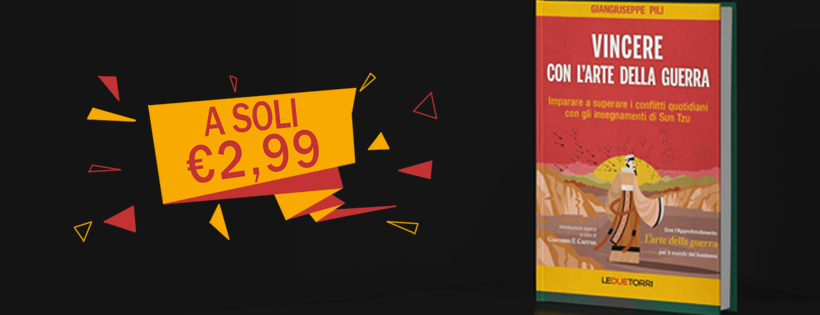
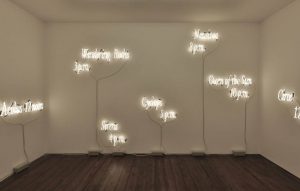
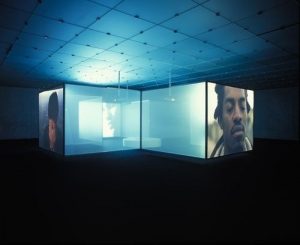
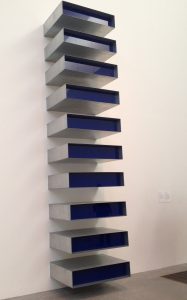
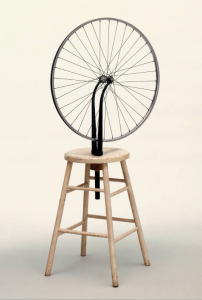
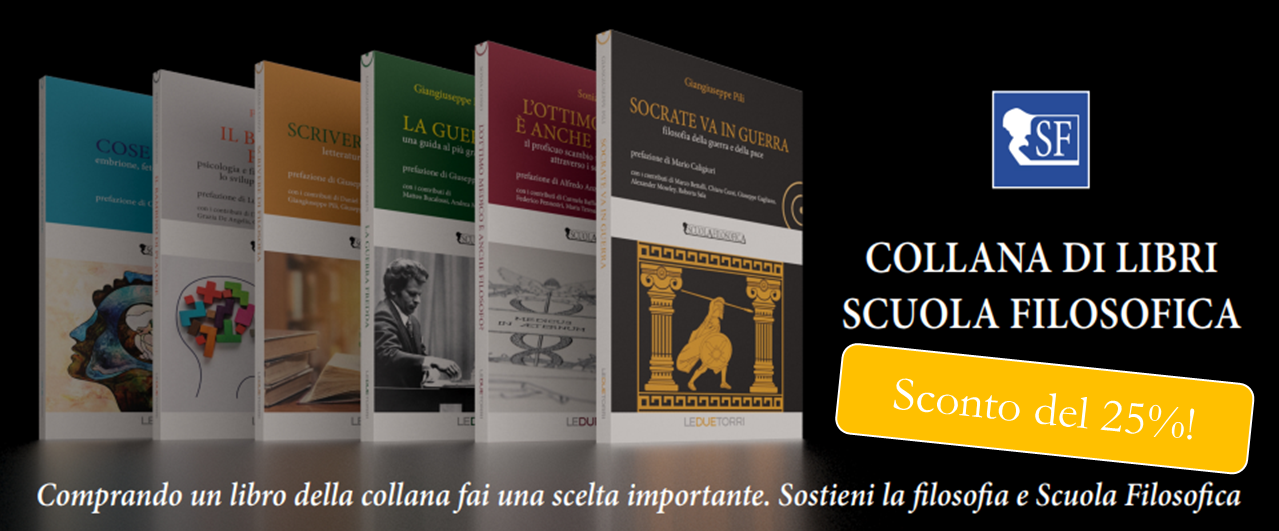

Be First to Comment